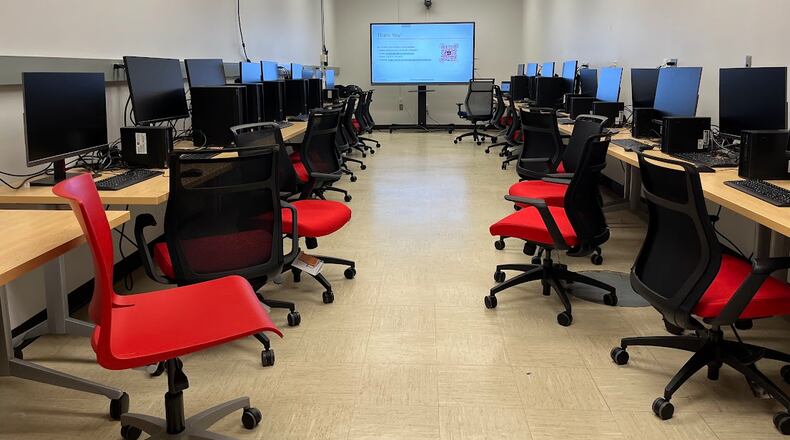Central State professor Sakthi Kumaran, associate professor of Soil Science and Agronomy, is the lead researcher on the project. Central State associate professor Brandy Phipps from the Department of Agricultural and Life Sciences is the co-principal investigator for the project.
Kumaran said the grant will look at the effects of increased rainfall and flooding on nitrogen and carbon cycling in the soil and water in Clark, Greene, Miami and Montgomery counties.
“This project involves very important connections with the stakeholders in our region, including all of those four counties, and people who are really interested in looking at improving soil health and water quality,” he said.
Kumaran said the project will focus on nitrates, which are compounds of nitrogen and oxygen naturally found in soil, water, air and plants. While most people are not exposed to nitrates at a high enough level to cause harm, the World Health Organization says a high concentration of nitrates can cause cancer, and they are classified on the same level as tobacco and asbestos.
A high level of nitrates in infants can cause “blue baby syndrome,” in which the red blood cells stop carrying as much oxygen, and the baby will look blue, brown or grey. This can be dangerous and possibly fatal.
Since most of the region’s water comes from groundwater — water held in the soil — an increased amount of nitrates could impact drinking water as well as soil quality.
Agriculture is the top industry in Ohio, so soil health is important to the economy’s health. Commercial nitrates are used to fertilize lawns and crops.
Kumaran stressed that the most recent water reports from local water plants show that the area is still on the safe side of nitrate concentrations in the drinking water. But he said it was important to be proactive and look at how that might change under climate stressors.
He said there is potential to continue the work at a greater scale, looking not only at the effects of climate change on the region, but how those effects might impact the greater Midwest. He is investigating how the work might also continue at other Historically Black Colleges and Universities, as well as other 1890 institutions.
Kumaran said the project will train new climate scientists. Graduate scientists from Ohio State University, a partner on the project, and Central State undergrad students will both be working on the research.
A third partner, the Pacific Northwest National Laboratory, is one of the Department of Energy’s laboratories.
“The CRCs (Climate Resilience Centers) will help form a nucleus for a diverse group of young scientists, engineers and technicians to further their scientific research and work on scientific teams,” the Department of Energy said in a statement. “The CRCs will also foster capacity at the regional and local levels by connecting with affected communities and stakeholders to enable them to translate basic research into actionable science to enhance climate resilience and identify potential future research opportunities.”
About the Author

